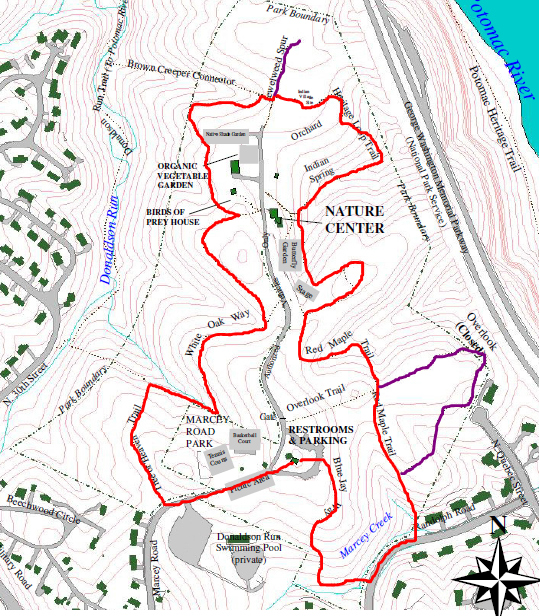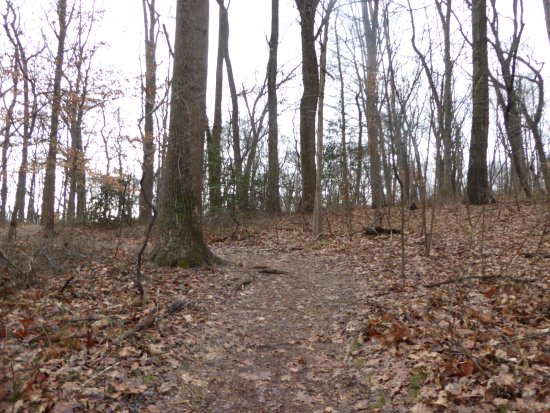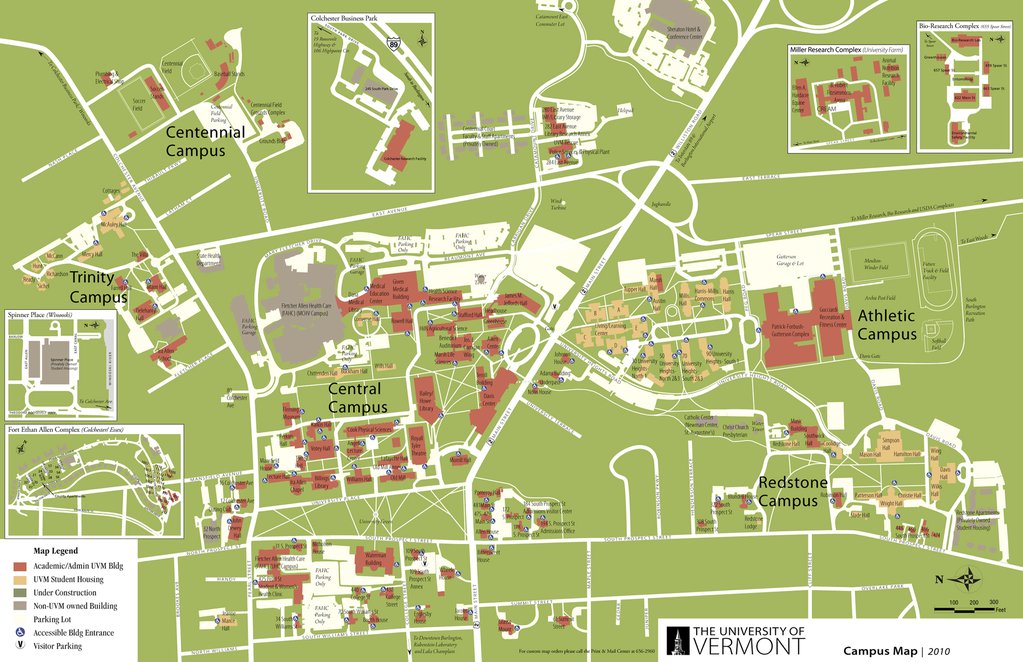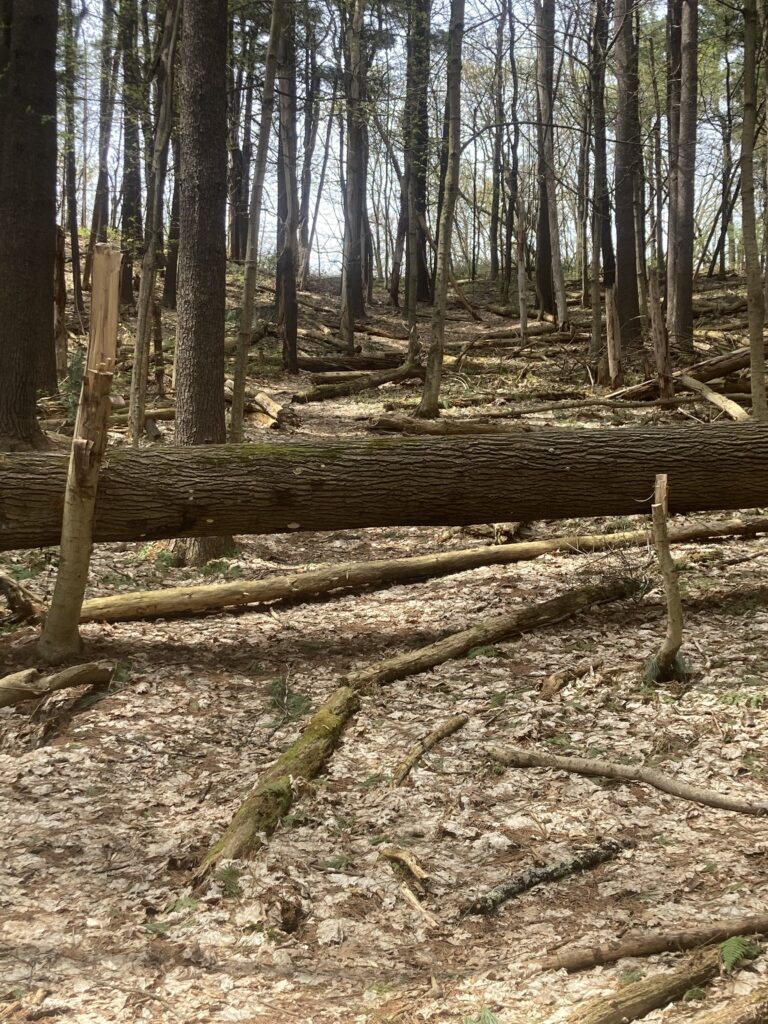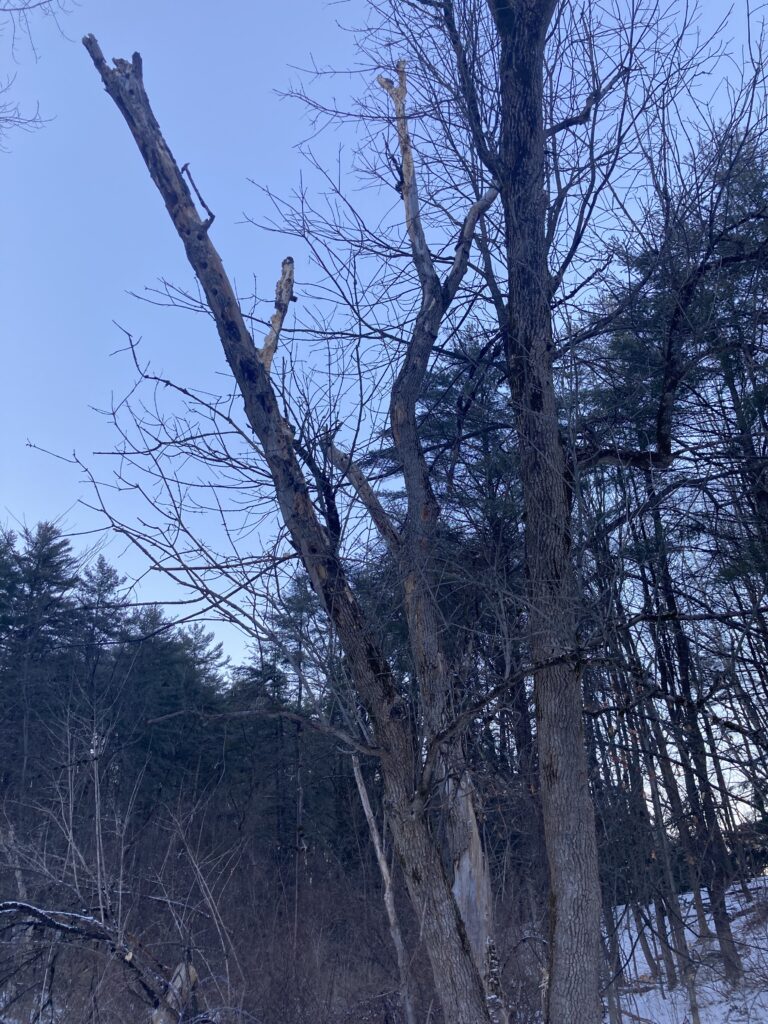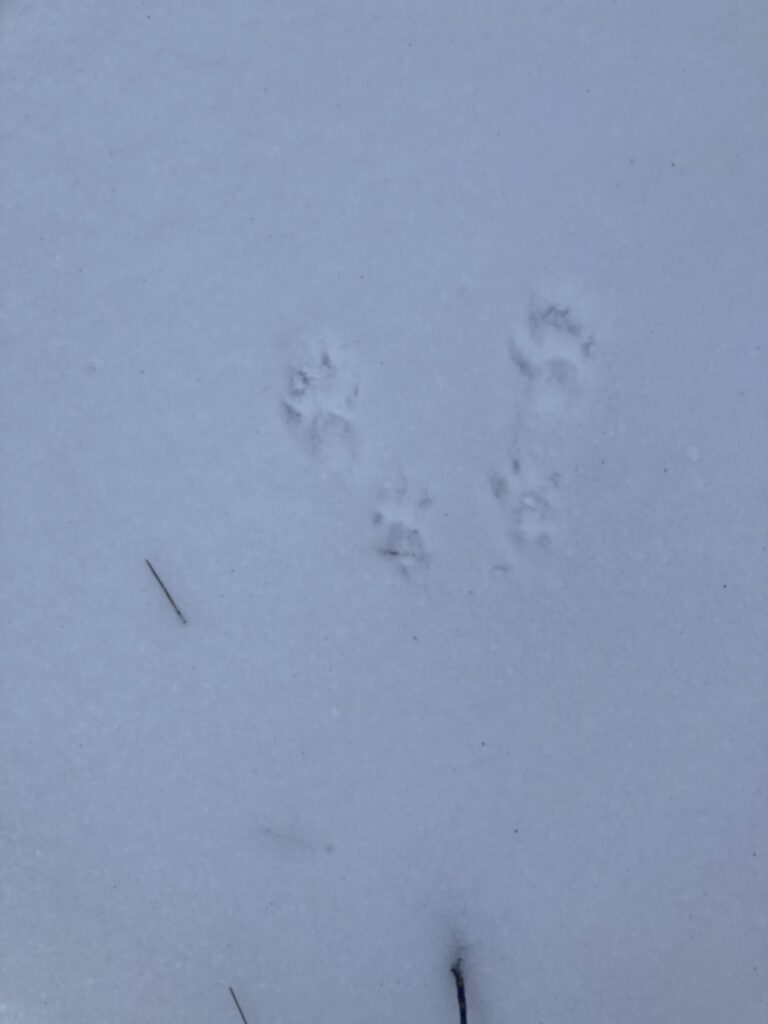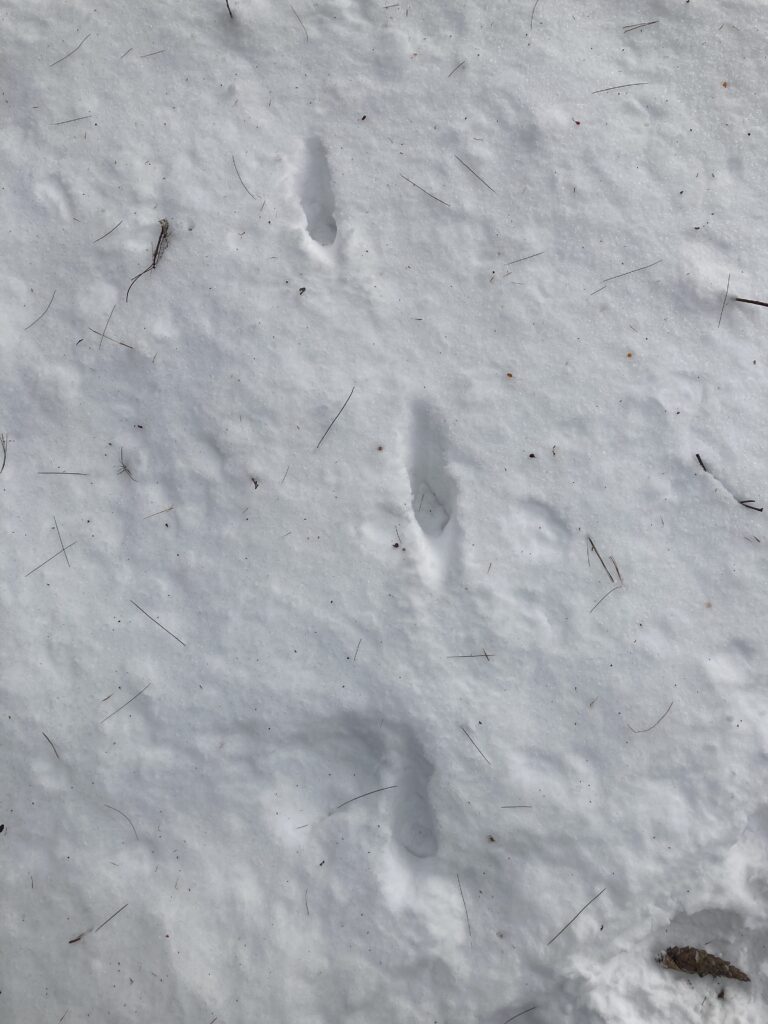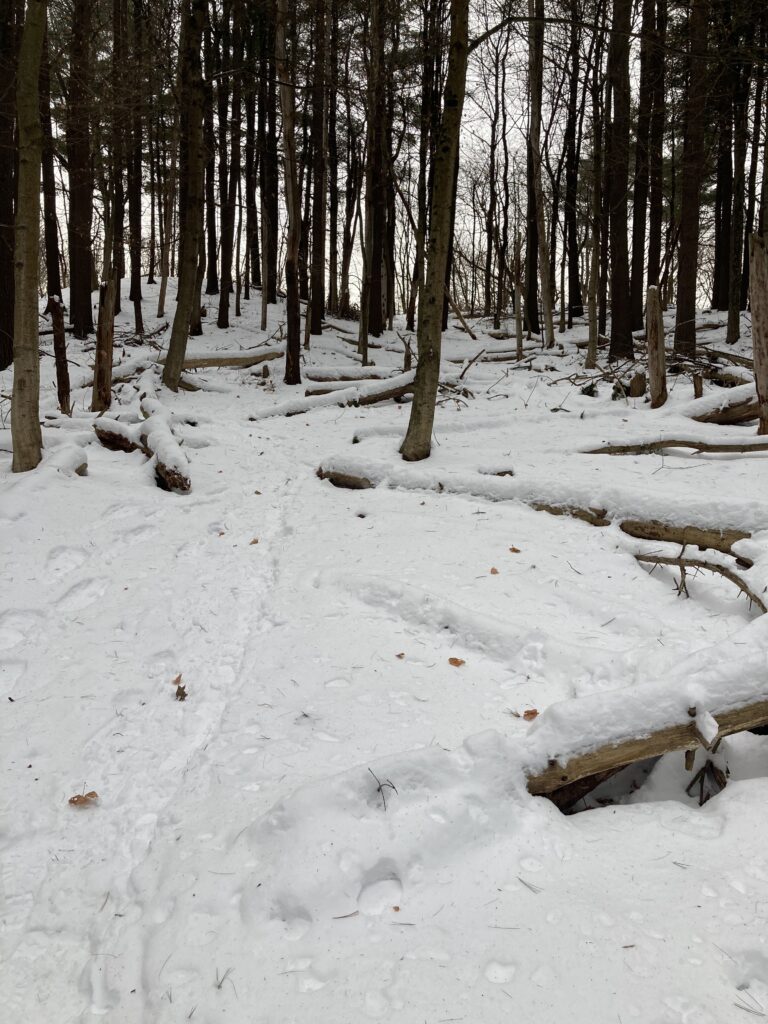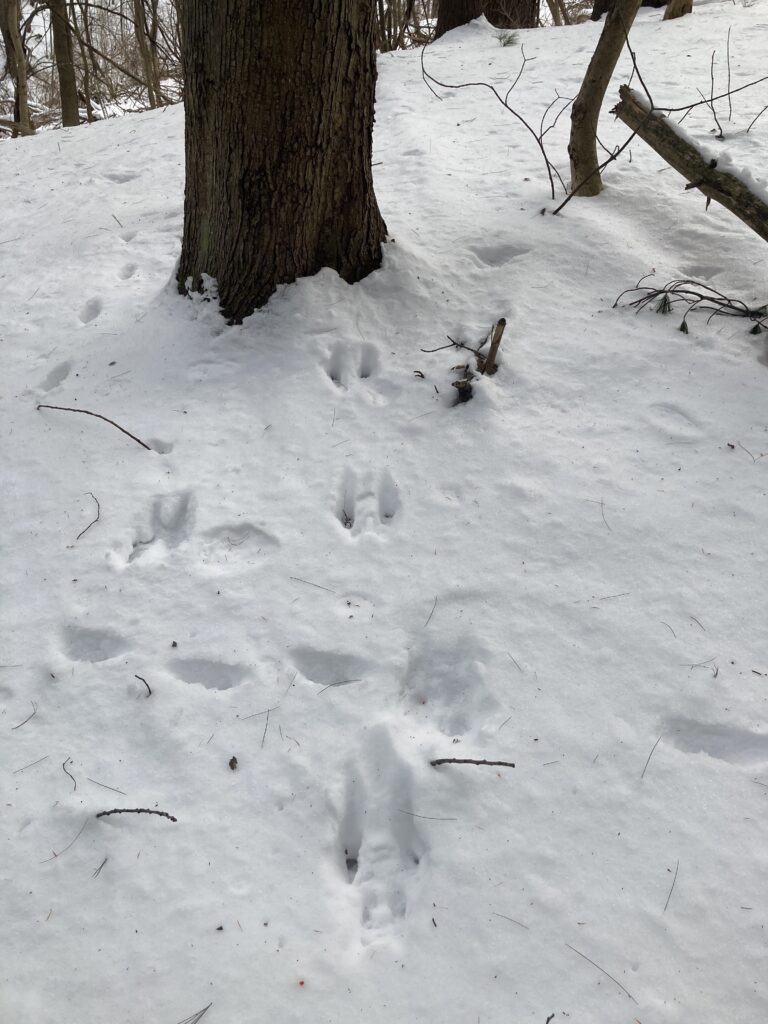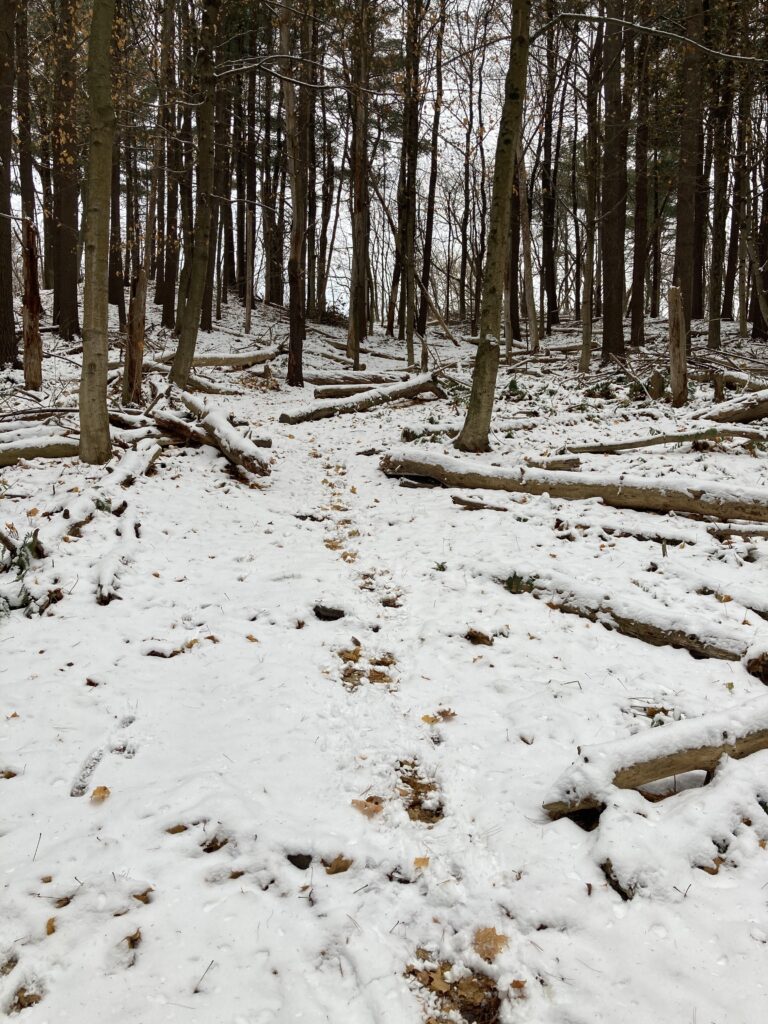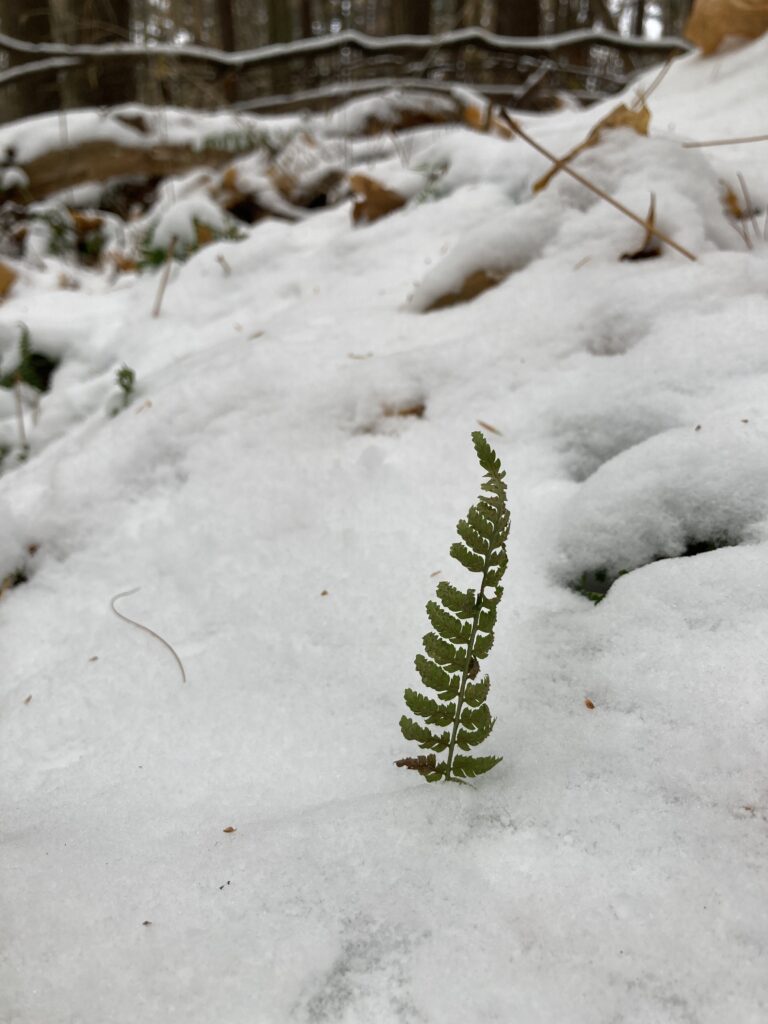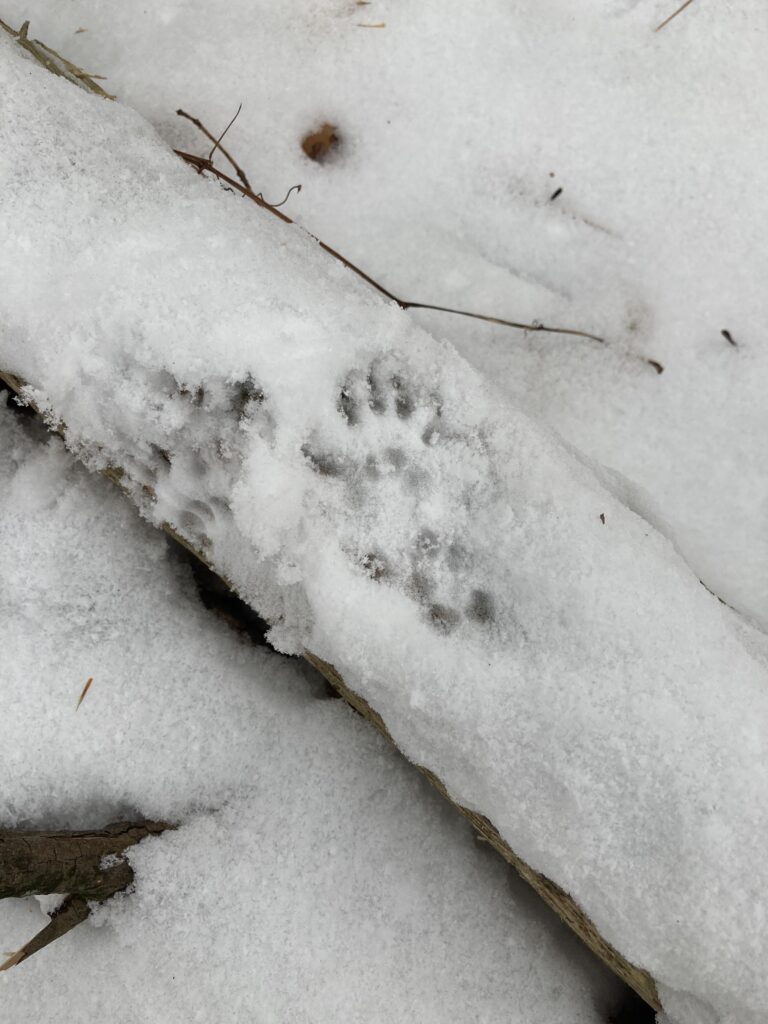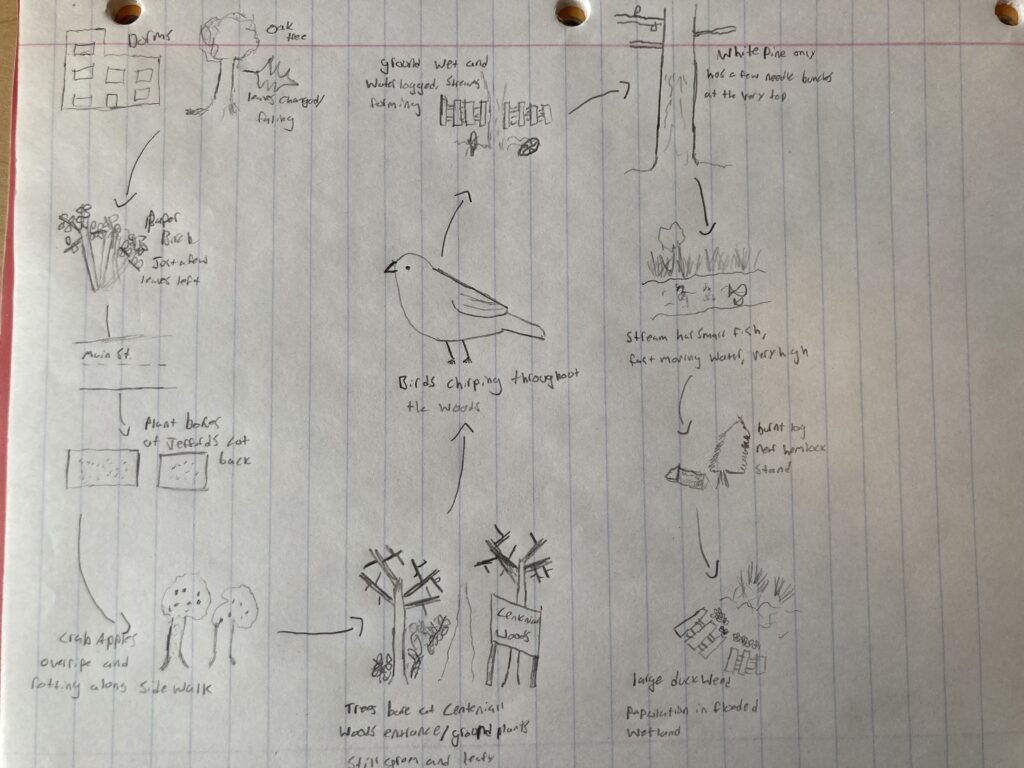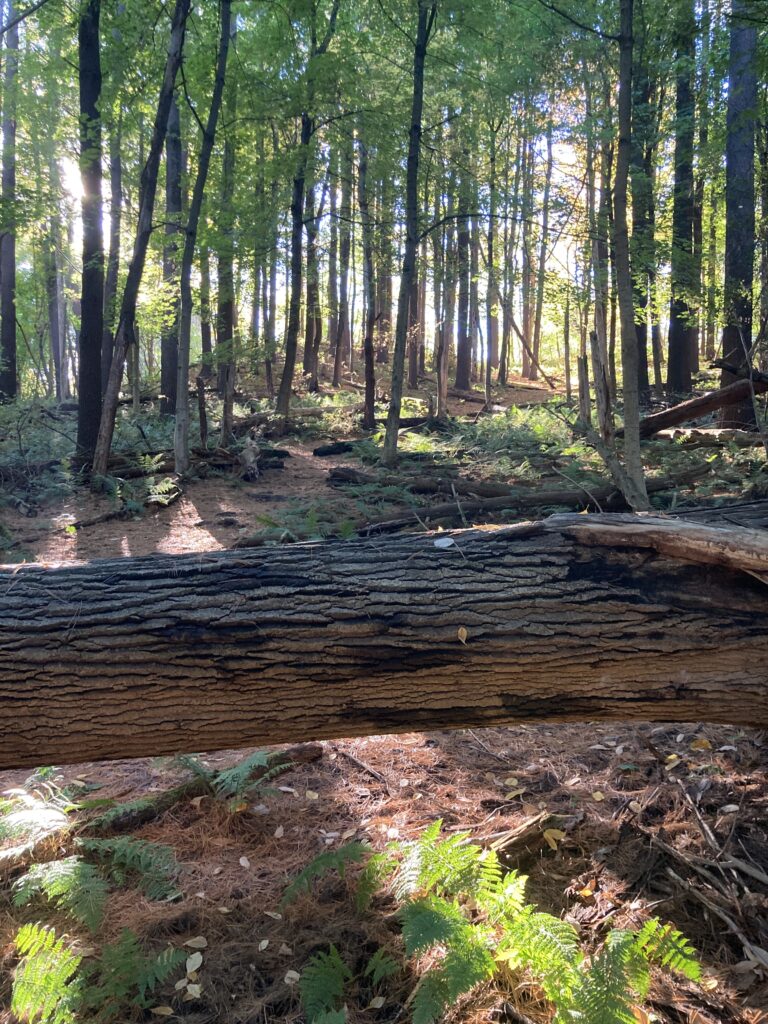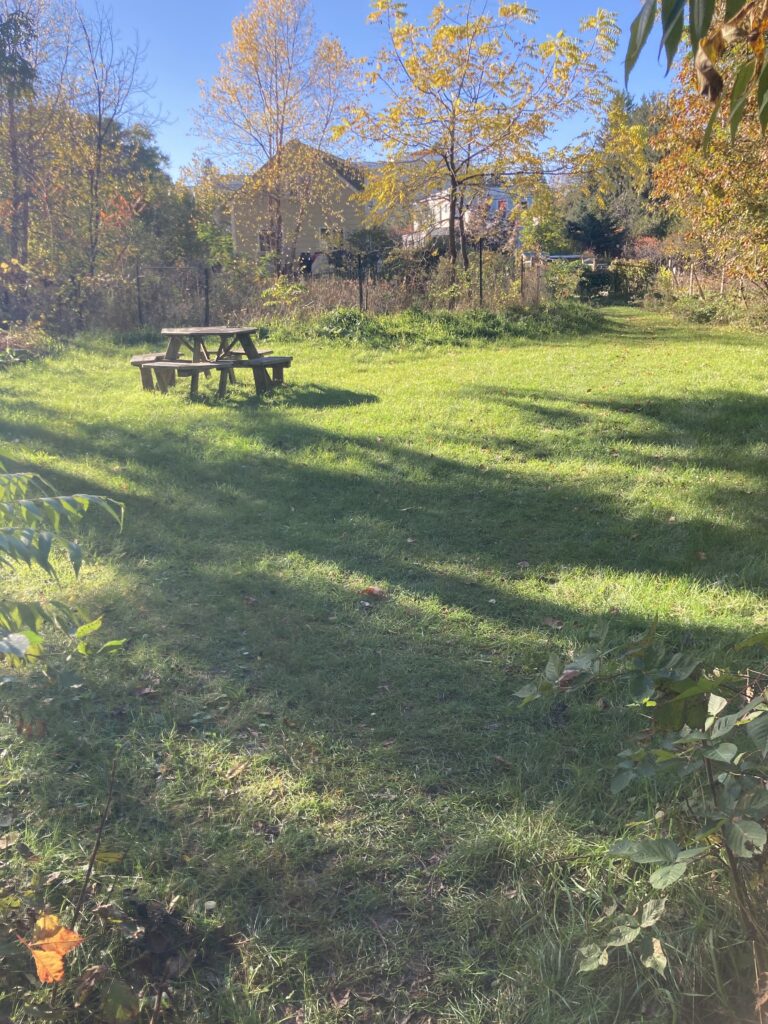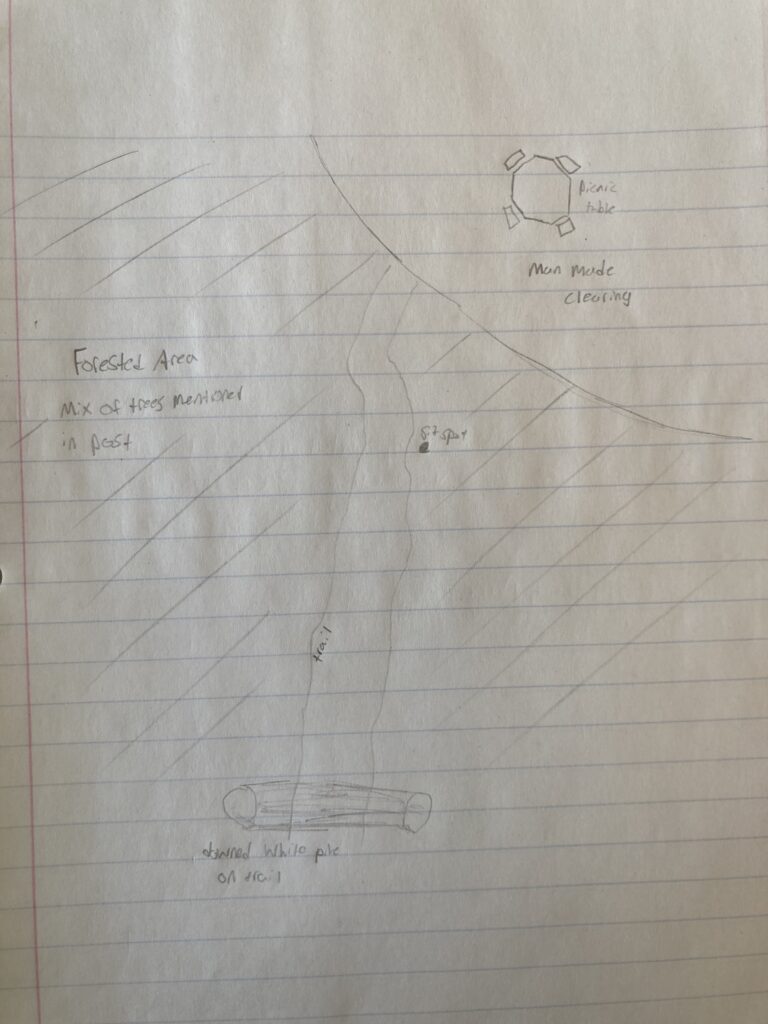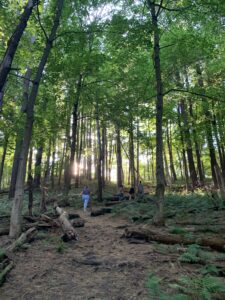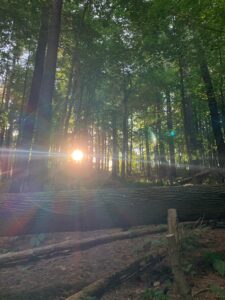Throughout April, there have been periods with and without snow, but I visited just after we received a heavy dusting overnight. Because of this, Centennial Woods looked quite similar to how it has throughout the winter, with a blanket of snow covering the ground, and the canopy and branches of trees clinging onto the last of the snow.
Even with the snow though, signs of Spring are readily apparent, in both the plants and wildlife of Centennial. Poking through the layer of snow are some ferns in the early stages of unfurling, and among the trees, maples, beech, and oaks, buds are starting to form and expand, a light green tinge beginning to be visible.
It seems that there’s also been an increase in small mammal and bird activity since earlier in the spring as well. I heard a variety of bird calls, and saw a few of them swooping through the canopy. And I also noticed many sets of tracks in the thin snow from what was probably from squirrels and foxes and rabbits. The squirrels were active as I was there, as I saw many chasing each other up and around trees.
